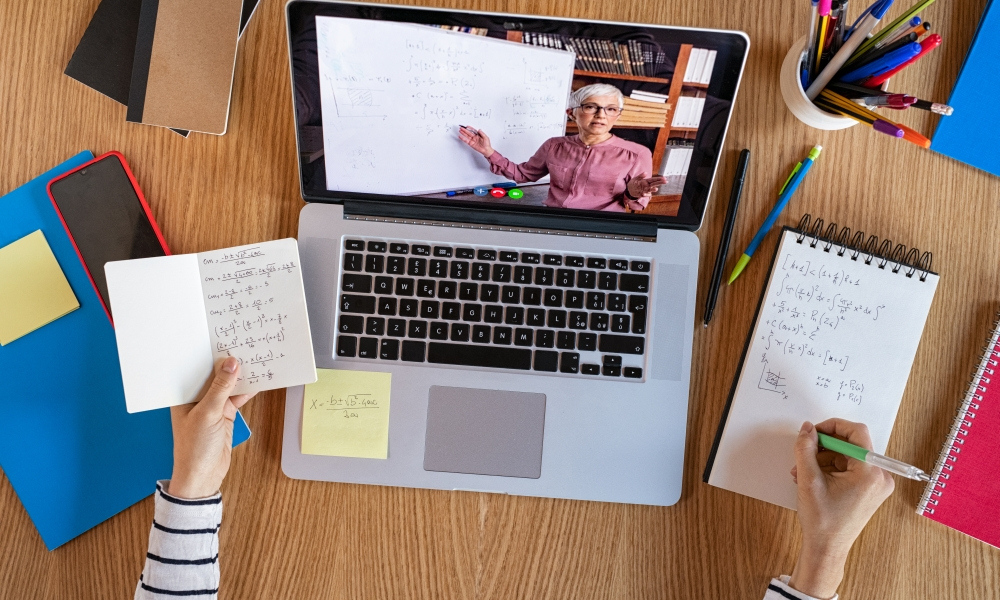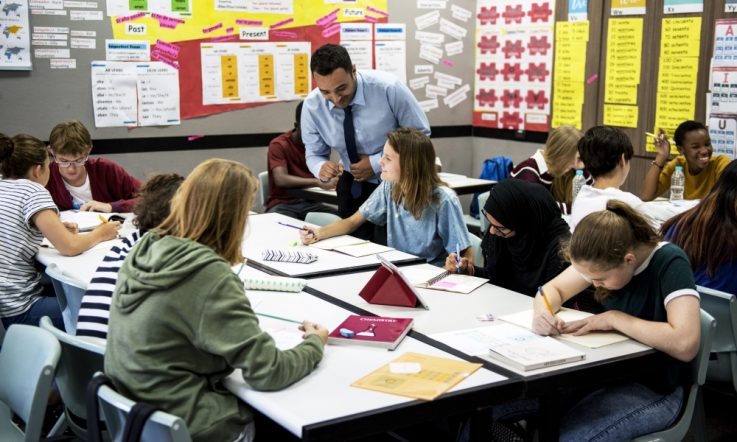This podcast from Teacher magazine is supported by Bank First. As the bank that exists to serve the education community, they are proud to support you during this challenging time. As educators you continue to go above and beyond, offering your strength, compassion, dedication, and expertise. So from the team at Bank First, thank you.
Thanks for downloading this episode of Teacher Staffroom, where we catch you up on the latest evidence, insight and action. I'm Dominique Russell. With the current global COVID-19 pandemic comes a dramatic change to education across the world and a lot of questions about the continuation of learning. At Teacher magazine, we've published a lot of content looking at navigating this challenge, so in this episode, I'll run you through some of the highlights.
As a part of Teacher Staffroom, we encourage you to listen together with colleagues and have a conversation about the questions I'll pose throughout the episode. That could look a little different at the moment with a lot of us working from home, but we'd still love for you to reflect on the questions and get in touch if you have any observations, or are doing anything particularly interesting in your school context during this time. You can find as on Twitter or Facebook by searching for ‘Teacher ACER'.
So, with schools in Australia suddenly and unforeseeably being required to plan to implement internet-based remote schooling, it begs the question: do students and teachers by default already have sufficient digital literacy? Julian Fraillon, Research Director at the Australian Council for Educational Research, unpacked this question in a recent article. He also had a look at some other myths and realities related to digital literacy. He had this to say:
It is important that schools and teachers keep in mind the likely reality that many students may not have the capacity to use technology without clear guidance and instruction and may need further support to develop critical information literacy skills. In the context of remote learning, the impact of deficiencies of these skills will be magnified as they may inhibit students' capacity to engage effectively with remote learning, as well as being necessary areas of learning themselves.
So, that brings me to a question for you to consider. As a teacher, what technical and information literacy-related skills are you assuming your students will need in order to work effectively in a home-learning environment? How can you determine whether or not your students have these skills? And, what can you do to address the gaps?
Staying on the topic of digital literacy, some relevant research from the Gonski Institute was also published, which looks at how technology impacts both learning and wellbeing. It found the amount of time children and teenagers are spending on digital technology inside and outside school is having a significant impact on their classroom learning, and physical and mental wellbeing. Teachers and school leaders were surveyed as part of this research, and just one finding was that almost six out of 10 teachers and principals reported a decline in students' overall readiness to learn over the last three to five years.
The report's authors, Amy Graham and Pasi Sahlberg wrote this in the report:
Australian educators send us a clear message in this study: classrooms have become emotionally, psychologically and behaviourally more complex places for teachers to teach and for students to learn.
They also found that 83 per cent of teachers also said they found it difficult to manage students' phone use in class – and even when they were banned, they found it difficult to monitor student use of other devices, such as tablets and computers. So, here's something to think about: how do you monitor students' use of devices in your classroom? Have you found any techniques to be particularly effective? If you'd like to share this with us, we'd love to hear from you, so please get in touch.
Now, Susannah Schoeffel and Tanya Vaughan from Evidence for Learning published some interesting content on working with parents on home-based learning. In one of my highlight articles of recent times they shared evidence on how teachers can work with parents to support students in a rapidly changing education landscape. There are three recommendations from Evidence for Learning's Teaching & Learning Toolkit and the Early Childhood Education Toolkit, they wrote, which can be helpful to inform the role that parents can play in supporting learning at home.
Those three recommendations are: parents supplement what teachers do, they don't replace them; parents help children develop independent learning skills and manage their own learning; and, educators can provide practical strategies for parents to support learning at home.
In a second article, they also explored some of the ‘best bet' strategies in translating evidence-based practices for learning at home. They wrote that, ‘Teachers are being asked to redefine the way they work to respond to the challenges of COVID-19. So we should all anchor to this statement: quality over quantity will make the difference in these times'.
To read more about their best bets, you'll find a link to the full article in the transcript of this podcast at teachermagazine.com.au.
So, considering what was explored by Susannah and Tanya, how do you communicate with parents about the role they play in supporting their child's learning? How are you using those channels to provide practical information about how they can support their child in the coming weeks? Will you need to introduce new ways of communicating with parents?
Now, let's change gears for a second and look to what else has been happening in education. Our Deputy Editor, Rebecca Vukovic, caught up with the only Australian educator named in the top 50 shortlist for the Global Teacher Prize. Ashley Stewart is a secondary school teacher from Western Australia and was nominated for the prize for her proven track record in getting more girls involved and engaged in STEM subjects. It was a fascinating interview with a bunch of practical takeaways. Here's Ashley on some steps she's taken to increase female participation.
I think the first thing that I do is I build really good relationships with all the girls at the school but with the Girls' Academy as well and the staff across the school. Without the strong relationships that my staff and myself have developed, the work could not be done – so that's the most important thing. And then I started running STEM projects for the Girls' Academy. At first it was out of my own pocket, just to show the girls that there's a purpose to education and that there are so many pathways that they can take to getting a career – whatever that career may look like – whether it's a phlebotomist, whether it's a nurse, whether it's a cosmetic tattoo artist – there are so many options that they can pursue.
So, we've spoken about some research that's particularly relevant to facilitating home-based learning during this time, but something else that's important not to neglect is teacher wellbeing during this pandemic. We heard from Rebecca Collie and Andrew Martin from the University of New South Wales on this topic. They looked into some evidence-backed strategies like social support and adaptability. They had this to say:
Our research has shown that teachers who are more adaptable report greater wellbeing at work. In addition, adaptable teachers demonstrate greater commitment to their job and lower disengagement at work. Disengagement at work occurs when teachers reach a point of putting very little or no effort into their work, often due to experiences of prolonged work stress.
So, think of a recent teaching or work-related situation where you needed to show adaptability –I'm sure for all of you this will be COVID-19 – how did you adjust your thinking, your behaviour and your emotions? Would you do anything differently if this situation happened again in the future? Would you need any new resources or support next time?
And, lastly for this episode, our columnist Sue Thomson also took a look at some research that closely relates to our new online learning environment. She analysed the PISA 2018 results to find that 78 per cent of disadvantaged students report having a quiet place to study, compared to 96 per cent of advantaged students. And, 84 per cent of disadvantaged students, compared to 99 per cent of advantaged students, report that they have a computer at home to use for school work.
Sue also made this point:
Across the world, though, people are suddenly realising how important teachers are. Many are gaining a new appreciation of the complexity of the task of teaching and of the professional relationships that teachers develop with their students. Only time will tell if this crisis will lead to an improvement in teachers' social status.
So I'll leave you with that for this episode. You're now all caught up on the latest in evidence, insight and action in education. Links to all the content and resources I've mentioned will be in the transcript of this podcast, will be available at our website, teachermagazine.com.au. Remember, we'd love to hear from you about how you've been using our content to suit your school context. You can get in touch with us via our website, or find us on Twitter and Facebook by searching for ‘Teacher ACER'.
You've been listening to a podcast from Teacher magazine, supported by Bank First. Bank First is a customer owned bank, committed to supporting the financial wellbeing of the education community since 1972. If you have been affected by COVID-19 visit bankfirst.com.au for financial support.



